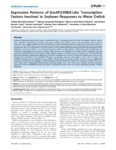Por favor, use este identificador para citar o enlazar este ítem:
http://www.alice.cnptia.embrapa.br/alice/handle/doc/957405Registro completo de metadatos
| Campo DC | Valor | Lengua/Idioma |
|---|---|---|
| dc.contributor.author | MARCOLINO-GOMES, J. | pt_BR |
| dc.contributor.author | RODRIGUES, F. A. | pt_BR |
| dc.contributor.author | OLIVEIRA, M. C. N. de | pt_BR |
| dc.contributor.author | FARIAS, J. R. B. | pt_BR |
| dc.contributor.author | NEUMAIER, N. | pt_BR |
| dc.contributor.author | ABDELNOOR, R. V. | pt_BR |
| dc.contributor.author | MARCELINO-GUIMARÃES, F. C. | pt_BR |
| dc.contributor.author | NEPOMUCENO, A. L. | pt_BR |
| dc.date.accessioned | 2013-05-08T11:11:11Z | pt_BR |
| dc.date.available | 2013-05-08T11:11:11Z | pt_BR |
| dc.date.created | 2013-05-08 | pt_BR |
| dc.date.issued | 2013 | pt_BR |
| dc.identifier.citation | Plos One, v. 8, n. 5, p. 1-11, May 2013. | pt_BR |
| dc.identifier.uri | http://www.alice.cnptia.embrapa.br/alice/handle/doc/957405 | pt_BR |
| dc.description | Soybean farming has faced several losses in productivity due to drought events in the last few decades. However, plants have molecular mechanisms to prevent and protect against water deficit injuries, and transcription factors play an important role in triggering different defense mechanisms. Understanding the expression patterns of transcription factors in response to water deficit and to environmental diurnal changes is very important for unveiling water deficit stress tolerance mechanisms. Here, we analyzed the expression patterns of ten APETALA2/Ethylene Responsive Element Binding-like (AP2/ EREB-like) transcription factors in two soybean genotypes (BR16: drought-sensitive; and Embrapa 48: drought-tolerant). According to phylogenetic and domain analyses, these genes can be included in the DREB and ERF subfamilies. We also analyzed a GmDRIP-like gene that encodes a DREB negative regulator. We detected the up-regulation of 9 GmAP2/EREB-like genes and identified transcriptional differences that were dependent on the levels of the stress applied and the tissue type analyzed (the expression of the GmDREB1F-like gene, for example, was four times higher in roots than in leaves). The GmDRIP-like gene was not induced by water deficit in BR16 during the longest periods of stress, but was significantly induced in Embrapa 48; this suggests a possible genetic/molecular difference between the responses of these cultivars to water deficit stress. Additionally, RNAseq gene expression analysis over a 24-h time course indicates that the expression patterns of several GmDREB-like genes are subject to oscillation over the course of the day, indicating a possible circadian regulation. | pt_BR |
| dc.language.iso | eng | eng |
| dc.rights | openAccess | eng |
| dc.title | Expression patterns of GmAP2/EREB-Like transcription factors involved in soybean responses to water deficit. | pt_BR |
| dc.type | Artigo de periódico | pt_BR |
| dc.date.updated | 2015-11-11T11:11:11Z | pt_BR |
| dc.subject.thesagro | Soja | pt_BR |
| dc.format.extent2 | 11 p. | pt_BR |
| riaa.ainfo.id | 957405 | pt_BR |
| riaa.ainfo.lastupdate | 2015-11-11 | pt_BR |
| dc.identifier.doi | 10.1371/journal.pone.0062294 | pt_BR |
| dc.contributor.institution | JULIANA MARCOLINO-GOMES, UEL; FABIANA APARECIDA RODRIGUES; MARIA CRISTINA NEVES DE OLIVEIRA, CNPSO; JOSE RENATO BOUCAS FARIAS, CNPSO; NORMAN NEUMAIER, CNPSO; RICARDO VILELA ABDELNOOR, CNPSO; FRANCISMAR CORREA MARCELINO, CNPSO; ALEXANDRE LIMA NEPOMUCENO, SRI. | pt_BR |
| Aparece en las colecciones: | Artigo em periódico indexado (CNPSO)  | |
Ficheros en este ítem:
| Fichero | Descripción | Tamaño | Formato | |
|---|---|---|---|---|
| ExpressionpatternsofGmAP2EREBLiketranscriptionfactorsinvolvedinsoybeanresponsestowaterdeficit..pdf | 1.35 MB | Adobe PDF |  Visualizar/Abrir |









